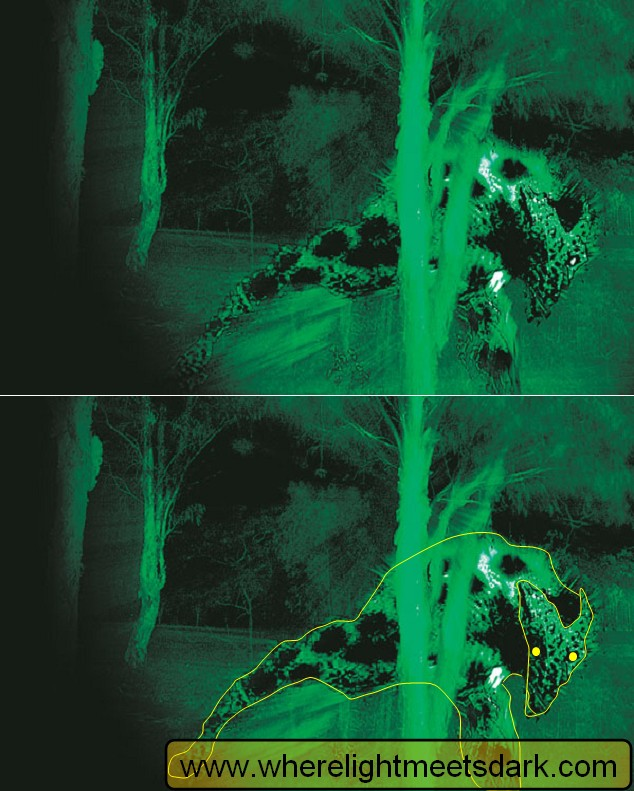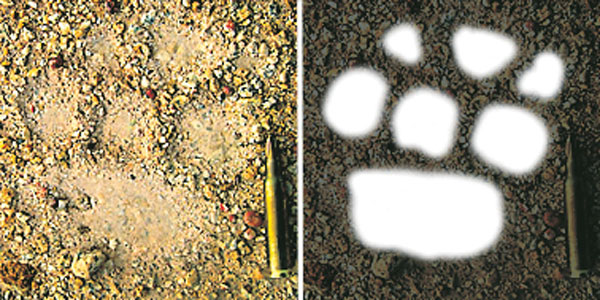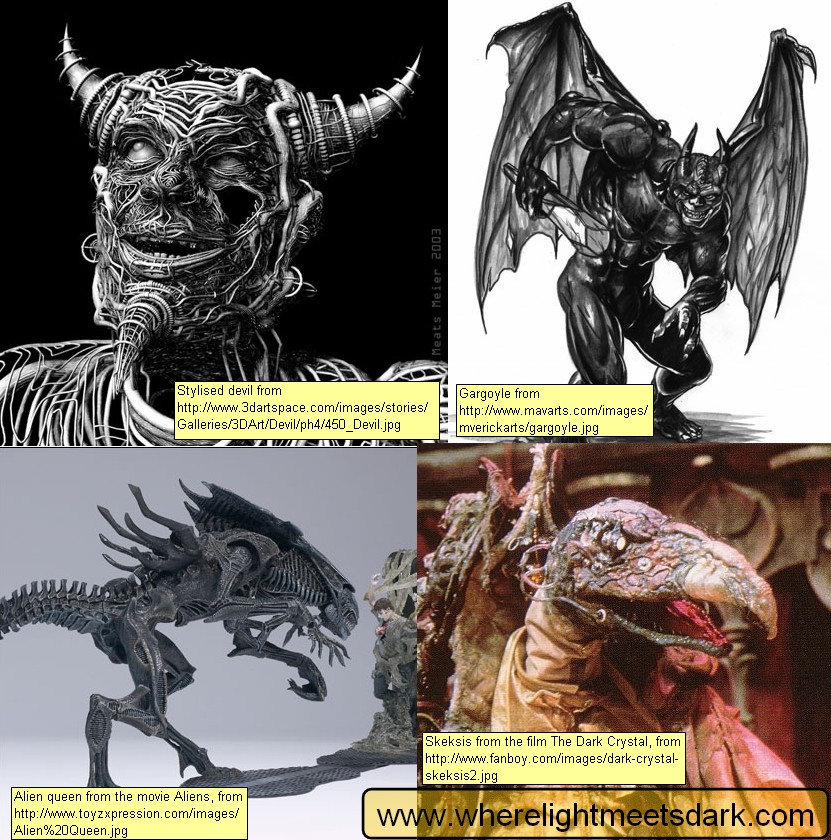Scherger creature
Scherger Airforce Base
From the airforce webpage on Scherger base, Scherger is "the final northern bare base to be constructed for the RAAF ... [completing] a series of strategic outposts reaching from Learmonth in Western Australia to the Cape York Peninsula in Queensland."
The creature
(click to enlarge)
The official Royal Australian Air Force newspaper contained an article which describes an encounter between "four trained Air Force members and [their] tracking dog" and a "creature" that "stood about waist high on all fours, had a small head, was spotted and moved like a cat".
The date
The same article says the military personnel were at the base for "exercises Northern Awakening and Kakadu". The Australian Government Department of Defence website gives from 26 July until 12 August 2005 as the timeframe for Excercise Kakadu.
The first sighting
"Leading Aircraftmen Mathew Cash, Cy Holland and Chris Hey ... accompanied by a dog and its handler had been sent out [as part of the excercise] to intercept a Mauveland special forces team that had launched a raid on the base and was withdrawing along a creek line near their position.
"[The group] moved from the creek line to the other side of the quarry, planning to intercept the enemy group as they entered the clearing.
"Leading Aircraftman Cash explained what happened next.
"'We came across the quarry and pulled up, looked around and this creature was sniffing on the ground, following exactly where we’d come through,' he said.
"'It pulled up on a mound [about 50m away] and just sat there.
"'We had our night weapon sight and our [night vision] on, watching it, and [the creature] was just sitting there sniffing and watching us.'
"... 'The two front legs were bigger than the two back legs, [with] big shoulder blades,' he said. 'I would have said it was a hyena, but obviously we don’t have hyenas here.'
Even the trained tracking and attack dog seemed put off by the sight of the unusual creature; it quietly crept to the back of the group and stayed out of sight.
"[Said Leading Aircraftman Hey], 'It wasn’t a pig and it was no dog. Even the dog handler said it wasn’t a dog; it didn’t move like
a dog.
"'It was weird looking – it was something that we’d all never seen before.'//"
The footprint
(click to enlarge)
The sighting just described occurred on a full moon. Following the sighting some patrol members scanned the quarry for evidence of the animal and located the unusual paw print.
The second sighting
"Two nights later, the next time the Air Force dog was with the patrol, the creature appeared again at about 5am
and lingered within 10m of the observation post. Again, the ADGs could not identify it."
First Impressions
First impressions is that this thing is just wierd. It doesn't look like any known animal. The article mentions that some personnel considered the possibility it might be a pig or a strangely marked dingo, but all concerned where fairly emphatic that it was neither of these.
The next thing to notice is the visual artifacts in the image. I do not understand the technology well enough to describe how these effects are produced. They seem most obvious near the lightest areas, such as the tree trunks, but there appear to be visual artifacts radiating from the creature itself.
These introduce additional complexity when trying to interpret the image as it is unclear whether apparent features of the creature may in fact be visual artifacts.
Thirdly, the general impression of the creature is that it is bipedal (walks on two legs) with a head like that of a devil, gargoyle, alien or skeksis.
The apparent horns imply this could be some form of deer or goat or similar, however you have to come back to the testimony of four trained military personnel (and their dog) who couldn't identify the creature.
The bipedal nature is also confusing, given the testimony it walked on all fours. Perhaps one leg is hidden behind the tree and the part of the animal I have interpreted as the head is in fact a leg in some way (for example, the right foreleg, assuming we are looking at the animal from behind)?
Fourth, the animal clearly has patchy spots. As the witnesses themselves considered, this brings to mind a boar or other pig - but this option was also rejected by them.
Further Analysis
The size of the animal is of note. If it was carnivorous (implied by the dog's fear, perhaps) then it is certainly larger than any confirmed carnivore in the wild in Australia.
Paul Clacher (of Queensland) has a big cat website which includes an image of a 16th century map of Queensland depicting "native lions". Interpreting the map is anyone's best guess but possible explanations include placental big cats, marsupial lions (thylacoleo - hence the placement of this sighting in this category) and thylacines.
There is other evidence to suggest the presence of thylacines - or something similar - in Queensland in the 1800s and even early 1900s. Some accounts note these were larger than Tasmanian specimens but it is still difficult to imagine a Tasmanian tiger - or thylacoleo - standing waist high.
The only other creature that comes to mind is the mythical bunyip. I have read accounts describing one of the bunyip types as having a small head atop a long neck. However, while a small head is mentioned, there is no note here of a long neck.
Stepping back again from any comparison with real and mythical creatures, a further possible explanation is that it is simply a hoax or fabrication - perhaps intended as a joke amongst mates, but which somehow made it into the work newspaper.
Footprint analysis
Needless to say, the footprint is, again, strange. Ignoring the unique pad placement for a moment, I find it striking that on such a firm substrate there should be such a clear print at all.
Perhaps I am mistaken and the ground surface is so delicate as to be so easily depressed as to leave such clear prints. One explanation for such good prints on what appears to be a hard substrate is that the animal was running, however there is no indication of the paw being dragged and distorting the print shape.
I must state up-front however that I have practically no experience at all in interpreting footprints - so please take this analysis with that knowledge in mind.
If this were a genuine print, then perhaps it shows two overlapping prints - the forepaw and hindpaw striking the same region on the ground.
Contacting the RAAF
I did send an email to the newspaper some months ago, but have not received any reply. Despite the article mentioning a prize is on offer for the best explanation it should perhaps be unsurprising that no-one would reply three years after its publication.
What are readers' thoughts? Any ideas at all? This is truly one baffling creature.


